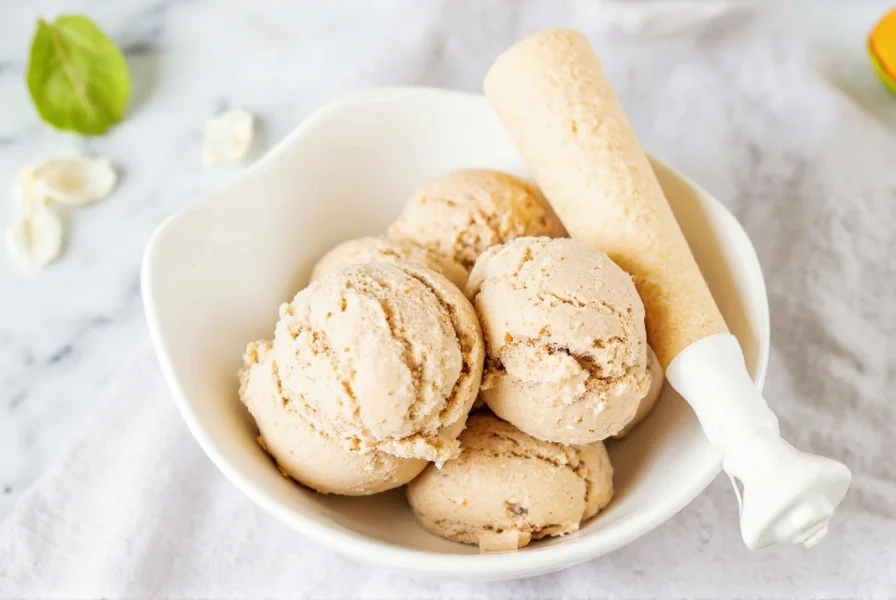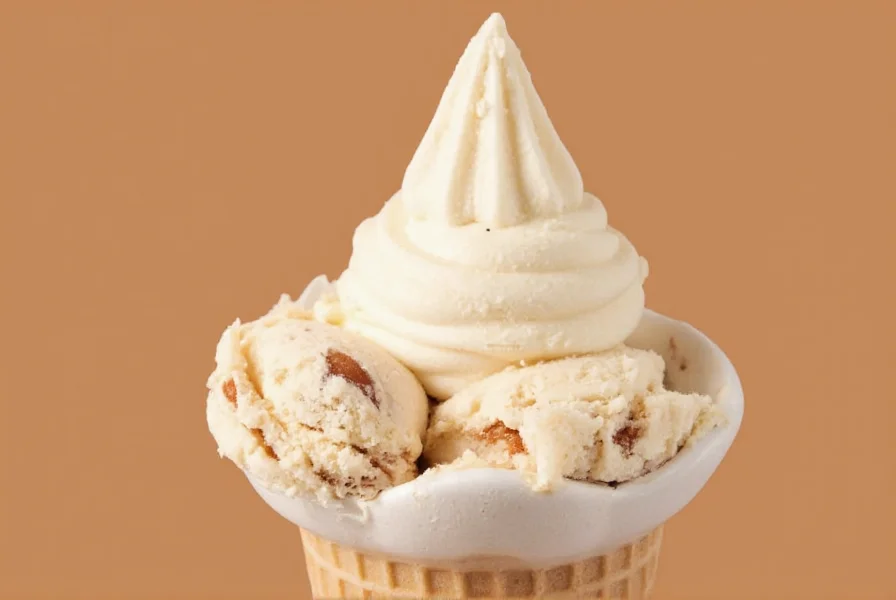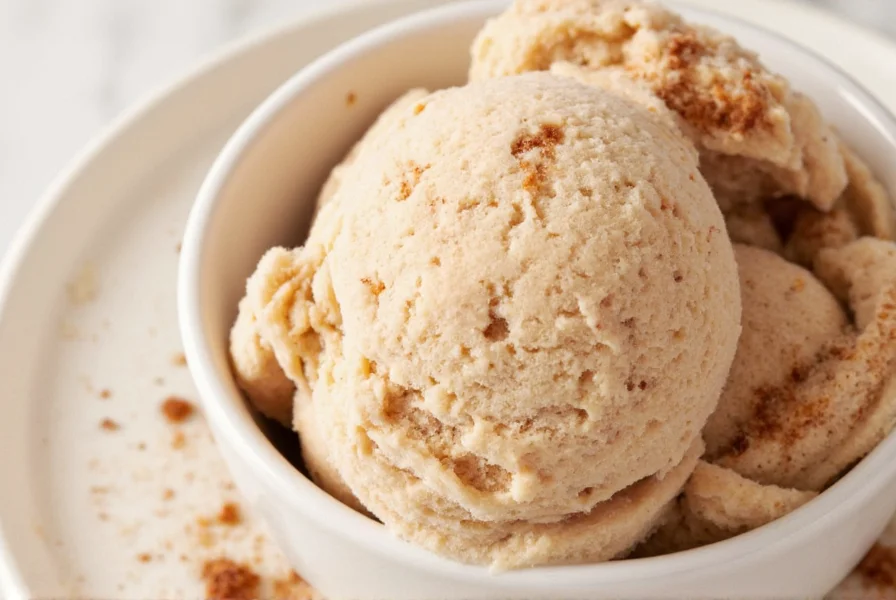Understanding Cinnamon Spice Ice Cream's Unique Flavor Profile
Cinnamon spice ice cream stands apart from standard vanilla through its distinctive warm spice notes. The primary flavor comes from cinnamon, which contains cinnamaldehyde—the compound responsible for its characteristic sweet-woody aroma. When incorporated into ice cream, cinnamon creates a flavor that's simultaneously comforting and sophisticated.
What makes this dessert special is how the cold temperature of ice cream interacts with cinnamon's warming properties. While cinnamon typically evokes warmth, the chilled nature of ice cream creates an intriguing sensory contrast. High-quality cinnamon spice ice cream balances these elements without overwhelming the palate, allowing the cinnamon to shine without becoming medicinal or overpowering.

The Cultural History of Cinnamon in Frozen Desserts
Cinnamon's journey to ice cream began centuries ago in Middle Eastern and Asian culinary traditions, where the spice was valued for both flavor and preservation. Historical records show cinnamon being used in chilled milk-based desserts in Persia as early as the 4th century. When ice cream making techniques spread from Asia to Europe, cinnamon naturally became one of the first spices incorporated into these frozen creations.
Unlike modern commercial versions that sometimes use artificial cinnamon flavoring, traditional cinnamon spice ice cream relies on freshly ground cinnamon for optimal flavor. The best versions use Ceylon cinnamon (often called "true cinnamon") rather than the more common Cassia variety, as Ceylon offers a more delicate, complex flavor with less bitterness.
Cinnamon Varieties and Their Impact on Ice Cream
Not all cinnamon creates the same ice cream experience. Understanding the differences between cinnamon types is essential for appreciating cinnamon spice ice cream:
| Cinnamon Type | Flavor Characteristics | Best For Ice Cream? |
|---|---|---|
| Ceylon Cinnamon | Sweet, citrusy, complex with subtle floral notes | Yes - creates refined, balanced flavor |
| Cassia Cinnamon | Bolder, hotter, more intense with slight bitterness | Moderate use - can dominate if overused |
| Saigon Cinnamon | Very strong, spicy, high oil content | Rarely - too intense for most palates |
Ceylon cinnamon's lower coumarin content also makes it a safer choice for regular consumption. When evaluating cinnamon spice ice cream options, check whether the product specifies cinnamon type—this significantly impacts both flavor and quality.
Perfect Pairings for Cinnamon Spice Ice Cream
The complex flavor profile of cinnamon spice ice cream makes it remarkably versatile for pairing. Unlike single-note flavors, its warm spice base complements both sweet and savory elements:
- Fruit pairings: Apple crisp, poached pears, and baked apples enhance cinnamon's natural affinity with orchard fruits
- Chocolate combinations: Dark chocolate shavings or a warm chocolate sauce create a sophisticated contrast
- Baked goods: Serve alongside gingerbread, pumpkin bread, or cinnamon rolls for a spice-forward dessert experience
- Unexpected pairings: Try with roasted sweet potatoes or butternut squash soup for a surprising savory-sweet combination
For optimal enjoyment of cinnamon spice ice cream flavor combinations, allow the ice cream to soften slightly at room temperature for 5-7 minutes before serving. This releases the full aromatic complexity of the spices while maintaining proper texture.
Creating Exceptional Cinnamon Spice Ice Cream at Home
While store-bought options exist, homemade cinnamon spice ice cream allows complete control over spice balance and quality. The key to success lies in proper spice infusion technique:
Begin by creating a cinnamon-infused cream base—simmer heavy cream with your chosen cinnamon variety (and optional complementary spices like a pinch of nutmeg or cardamom) for 15-20 minutes. This gentle heating extracts maximum flavor without developing bitterness. Strain the mixture thoroughly before chilling and churning. For deeper flavor complexity, consider adding a small piece of orange zest during infusion.
When making cinnamon spice ice cream without artificial flavors, remember that spices mellow slightly during freezing. You may need to slightly increase spice levels in your base mixture compared to what tastes perfect at room temperature. The ideal cinnamon concentration creates noticeable warmth without overwhelming the creamy dairy foundation.

Serving and Storage Recommendations
Proper storage maintains cinnamon spice ice cream's delicate flavor balance. Keep it in an airtight container with parchment paper pressed directly against the surface to prevent ice crystals. For optimal cinnamon spice ice cream texture, store at -18°C (0°F) or colder.
When serving, use a scoop warmed under hot water for clean portions. Cinnamon spice ice cream reaches its flavor peak when allowed to soften for 5-7 minutes at room temperature before eating. This slight warming releases the volatile aromatic compounds in the cinnamon, enhancing the overall sensory experience.
Frequently Asked Questions
What's the difference between cinnamon ice cream and cinnamon spice ice cream?
Cinnamon ice cream typically features only cinnamon flavor, while cinnamon spice ice cream incorporates additional complementary spices like nutmeg, cardamom, or cloves. The "spice" designation indicates a more complex flavor profile with multiple warming spices working in harmony rather than a single dominant cinnamon note.
Why does cinnamon spice ice cream sometimes taste bitter?
Bitterness in cinnamon spice ice cream usually comes from using Cassia cinnamon instead of Ceylon cinnamon, or from over-extracting the spice during preparation. Cassia contains higher levels of coumarin which can taste bitter, especially when heated too long. Proper infusion technique—simmering cream with cinnamon for 15-20 minutes rather than boiling—prevents bitterness while extracting optimal flavor.
Can cinnamon spice ice cream be dairy-free?
Yes, cinnamon spice ice cream can be successfully made with dairy-free bases like coconut milk, cashew cream, or oat milk. The key is using a high-fat alternative to mimic dairy's creamy texture. Coconut milk works particularly well with cinnamon's flavor profile. When making dairy-free cinnamon spice ice cream, you may need to slightly increase the cinnamon quantity as the spice doesn't infuse as readily into non-dairy bases.
How long does homemade cinnamon spice ice cream last?
Properly stored homemade cinnamon spice ice cream maintains best quality for 2-3 weeks in the freezer. Use an airtight container with parchment paper pressed against the surface to prevent ice crystals and flavor degradation. While technically safe beyond this timeframe, the delicate spice flavors begin to diminish after three weeks, and texture deteriorates due to ice crystal formation.
What makes cinnamon spice ice cream different from chai ice cream?
While both feature warm spices, cinnamon spice ice cream focuses primarily on cinnamon with supporting spices, whereas chai ice cream replicates the full spice blend of masala chai—typically including cardamom, cloves, ginger, and black pepper in addition to cinnamon. Chai ice cream often has tea notes from actual brewed tea, while cinnamon spice ice cream emphasizes the cinnamon-forward profile without tea elements.











 浙公网安备
33010002000092号
浙公网安备
33010002000092号 浙B2-20120091-4
浙B2-20120091-4